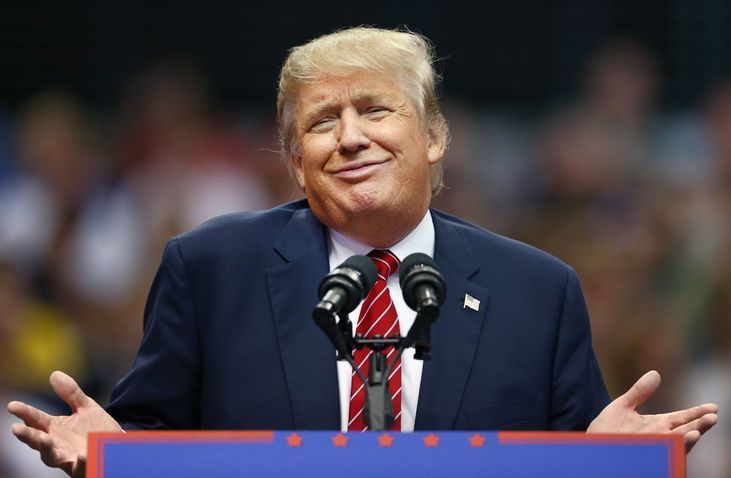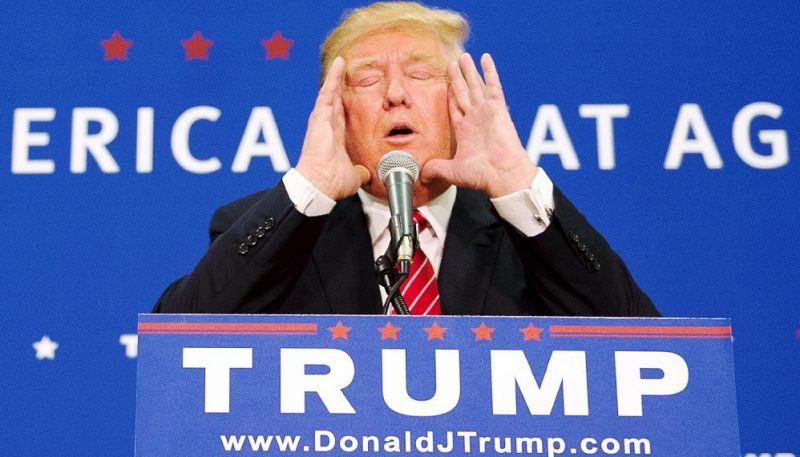
Donald Trump loves to promote all things fake, like his ‘fake news,’ but close watchers of the president have noticed that yet another thing about him is fake. His Twitter followers, which escalated last weekend by nearly 3 million, over are only half real.
Well, not even half as the latest Twitter audit on Sunday shows that of his 31.4 million followers, 16,447,900 are fake.
Hillary Clinton mentioned this insurrection recently.
“Who is behind driving up Trump’s Twitter followers by the millions? We know they’re bots. Why? I assume there’s a reason for everything. Is it to make him look more popular than he is? Is it to try to influence others on Twitter about what the messaging is?” Clinton asked at a Recode event.
Trump has been beleaguered with this claims through his election, but social media service, Social Rank, discovered nearly 1 million “egg accounts,” or ones that have no profile picture, began following the president in May. Since February, the company noticed an eight percent increase in those egg followers.
While some think these have been purchased to sustain Trump’s ego, there are others who are watching closely feeling there could be far more nefarious purposes behind this increase. One theory is that this growing army could help in spreading false stories or revisit old articles to create renewed enthusiasm with his 38 percent diehard supporters. These can be used to help distract from all those pesky Russia stories.
Yes, it sounds like the Season 5 plotline of “House of Cards” on Netflix, but the show has been running a close parallel storyline that’s a little too close to home for most viewers.
“A bot army can be utilized for a number of dishonest purposes, chief amongst them, misrepresenting public sentiment about whichever topics the controller has an interest in,” explained Brad Hayes, a fellow at the MIT Computer Science and Artificial Intelligence Lab’s Interactive Robotics Group.
“If 3 million people started tweeting in favor of or against a particular topic, would it shift public perception? What if those same 3 million people targeted every source you use for information? It’s fair to say that this kind of written ‘show of force’ can certainly alter perceptions.”
In tech terms, this is known as “astroturfing” which helps create a fundamental shift in how people view a topic. If there is a flood of touting one view, it makes it uncomfortable for some to have a dissenting voice which creates a shift in the national storyline.
“You can use your botnet to drown out dissenting opinions or to exhaust your target’s ability to respond to legitimate calls for response,” he explained.
Under that scenario, bots would be programmed to post and disseminate political stories to targeted users who are more likely to follow accounts associated with, or click on links posted by, conservative media outlets, like Breitbart News and InfoWars.
“In my expert opinion, something strange is going on,” said Samuel C. Woolley, research director for the Computational Propaganda project at Oxford University. “It’s consistent with other strange things that have gone on before with this politician’s Twitter feed.”
First, a few facts: Trump’s Twitter following, which is one of the largest in the world, has been surging since his inauguration in January, rising this month alone from 28.6 million to more than 31 million, according to Twitter Counter, a tracking site. That’s an increase of 2.4 million in May, for an average of nearly one each second of every day, around the clock.
That would be extremely impressive for most people but less so for one of the world’s most famous men, not to mention one known to use Twitter to convey some of his bluntest and newsiest utterances. Bear in mind, for perspective, that the Twitter feed for Trump’s predecessor, @BarackObama, has more than 89 million followers, including a substantial percentage of bots, according to various reports.
But here’s the catch: There is a strangely large percentage of Trump’s followers — and especially his newest followers — that have only the most rudimentary account information, with no profile picture, few followers and little sign that they have ever tweeted. These are so-called “egg followers” because instead of a profile photo they traditionally carried the image of a blank egg on Twitter account pages.
And that, say some researchers, is odd.
“This is very, very obvious when you just go and click on the newer followers,” said Jonathan Albright, research director of the Tow Center for Digital Journalism at Columbia University. “The quality of the new followers is pretty bad.”
SocialRank, a New York-based analytics company that works with Southwest Airlines, L’Oreal and the NFL, reported this week that as Trump’s number of followers surged from 24.1 million in February to 31 million in May, his number of “egg followers” grew sharply as well, from 5 million to 9.1 million. Of that group, more than half have never tweeted, and only 4 percent have 25 or more followers; 927,000 of Trump’s egg followers opened new accounts in May, according to SocialRank’s analysis posted Tuesday.
That doesn’t necessarily make the accounts “fake,” as some reports have claimed. Most academic researchers say that determining what percentage of followers are actual individual humans can be extremely difficult — and almost impossible with an account with as many followers as Trump’s. Twitter itself has acknowledged that as much as 8.5 percent of all of its accounts are likely automated, though independent researchers say the number may be twice as high. (The company also has a team that searches for bots and, when found in violation of Twitter policies, shuts them down.)
There another possible explanation for Trump’s mysterious follower surge. Twitter spokesman Nick Pacilio said that newer users often appear without profile photos because they have not yet developed their accounts fully. The company’s most recent earnings report shows that the number of Twitter accounts overall grew by around 9 million in the first quarter of 2017, up to 328 million, meaning plenty of newcomers may be using the platform merely to browse what others are saying. (In March, Twitter abandoned the egg image for users without profile pictures, but the term “egg followers” has endured among researchers).
Alexander Taub, chief executive of SocialRank, said that both theories may be true. Trump may be drawing an unusual number of new — but real — egg followers. And he may also be benefitting from an aggressive new campaign of a bot creation.
“It’s probably a combination of both,” Taub said, “but there’s something fishy.”
Here’s where a little history may help sharpen the picture. Last year, during the election campaign, several academic researchers tracked the use of Twitter bots supporting either Trump and his Democratic rival Hillary Clinton. They reported that the bots supporting Trump massively outperformed the bots supporting Clinton, by a margin of 5-to-1 in the final days before the vote.
Among accounts that researchers had identified as “highly automated” — meaning likely bots — 81.9 percent carried at least some messaging supporting Trump, according to a November paper written by Woolly and two colleagues, Bence Kollyani of Corvinus University and Philip N. Howard of Oxford.
It’s that history, in part, that makes Woolley suspicious that Trump’s surge may benefit from aggressive bot development. “There’s a legacy of this.”
But even Woolley and other researchers skeptical of Trump’s total say there is no definitive way to determine who is behind making Twitter bots, nor is there any plausible way to determine their motives.
Descriptions of how to build Twitter bots are widely available on the Web, and they can even be purchased en masse from companies that specialize in developing them. Spoofing location, language, profile pictures and other information for Twitter accounts is also easy, making it hard to get clear answers, said University of Southern California researcher Emilio Ferrara.
“A 13-year-old kid with access to Google can figure out how to create a smokescreen,” Ferrara said.



